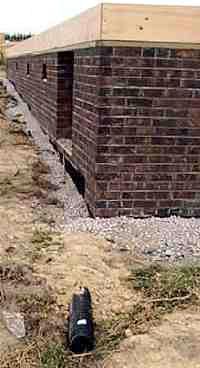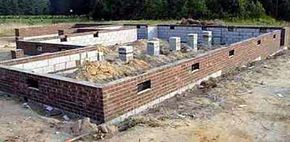Crawl Space
A crawl space has several advantages over basements and slabs:

Most of the time, a crawl space is made of cinder block with a brick facing.
Advertisement
This is exactly how our sample house is put together. The picture above shows how the finished foundation looks.
You might have noticed in the previous pictures that the concrete work for the crawl space was not done with much precision at all. One of the neat things that the mason (bricklayer) does is carefully adjust the height of the cinder blocks and bricks with mortar thickness so that the crawl-space walls end up exactly level all the way around.
One problem that arises in crawl spaces and basements is dampness. In order to keep water out, perforated pipe and gravel are used in a trench around the crawl space to route water away. The drainage system looks like this:
In a house with a basement, this same sort of drainage system is added along the bottom of the walls. The basement walls are then generally insulated with rigid foam board and then heavily waterproofed before dirt is backfilled against the walls.
